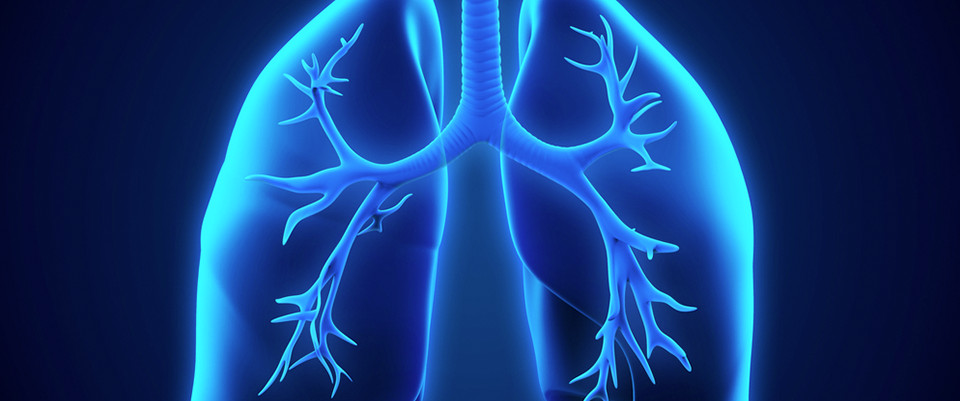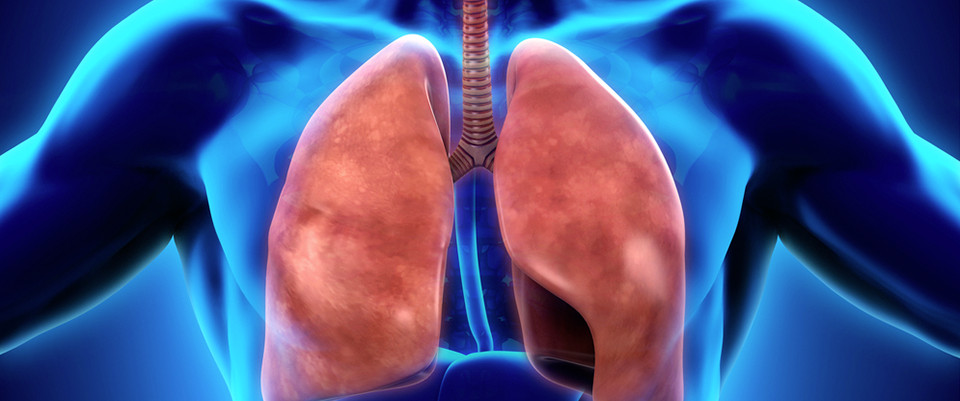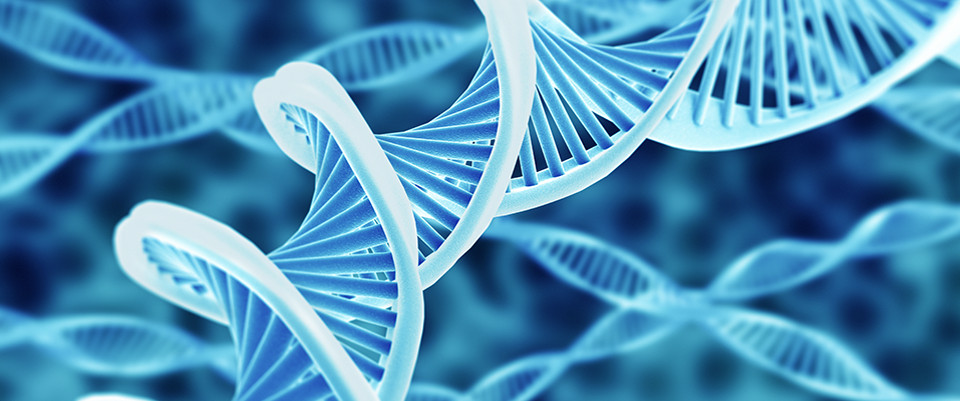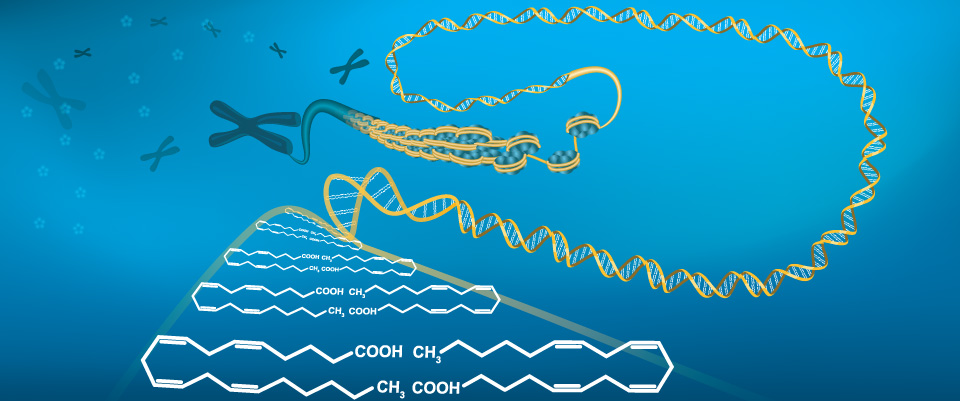PubMed
Application of Electronic-Nose Technologies and VOC-Biomarkers for the Noninvasive Early Diagnosis of Gastrointestinal Diseases †.
Related Articles
Application of Electronic-Nose Technologies and VOC-Biomarkers for the Noninvasive Early Diagnosis of Gastrointestinal Diseases †.
Sensors (Basel). 2018 Aug 09;18(8):
Authors: Wilson AD
Abstract
Conventional methods utilized for clinical diagnosis of gastrointestinal (GI) diseases have employed invasive medical procedures that cause stress, anxiety and pain to patients. These methods are often expensive, time-consuming, and require sophisticated chemical-analysis instruments and advanced modeling procedures to achieve diagnostic interpretations. This paper reviews recent applications of simpler, electronic-nose (e-nose) devices for the noninvasive early diagnosis of a wide range of GI diseases by collective analysis of headspace volatile organic compound (VOC)-metabolites from clinical samples to produce disease-specific aroma signatures (VOC profiles). A different "metabolomics" approach to GI disease diagnostics, involving identifications and quantifications of disease VOC-metabolites, are compared to the electronic-nose approach based on diagnostic costs, accuracy, advantages and disadvantages. The importance of changes in gut microbiome composition that result from disease are discussed relative to effects on disease detection. A new diagnostic approach, which combines the use of e-nose instruments for early rapid prophylactic disease-screenings with targeted identification of known disease biomarkers, is proposed to yield cheaper, quicker and more dependable diagnostic results. Some priority future research needs and coordination for bringing e-nose instruments into routine clinical practice are summarized.
PMID: 30096939 [PubMed - in process]
Nontargeted Metabolomics for Phenolic and Polyhydroxy Compounds Profile of Pepper (Piper nigrum L.) Products Based on LC-MS/MS Analysis.
Related Articles
Nontargeted Metabolomics for Phenolic and Polyhydroxy Compounds Profile of Pepper (Piper nigrum L.) Products Based on LC-MS/MS Analysis.
Molecules. 2018 Aug 09;23(8):
Authors: Gu F, Wu G, Fang Y, Zhu H
Abstract
In the present study, nontargeted metabolomics was used to screen the phenolic and polyhydroxy compounds in pepper products. A total of 186 phenolic and polyhydroxy compounds, including anthocyanins, proanthocyanidins, catechin derivatives, flavanones, flavones, flavonols, isoflavones and 3-O-p-coumaroyl quinic acid O-hexoside, quinic acid (polyhydroxy compounds), etc. For the selected 50 types of phenolic compound, except malvidin 3,5-diglucoside (malvin), l-epicatechin and 4'-hydroxy-5,7-dimethoxyflavanone, other compound contents were present in high contents in freeze-dried pepper berries, and pinocembrin was relatively abundant in two kinds of pepper products. The score plots of principal component analysis indicated that the pepper samples can be classified into four groups on the basis of the type pepper processing. This study provided a comprehensive profile of the phenolic and polyhydroxy compounds of different pepper products and partly clarified the factors responsible for different metabolite profiles in ongoing studies and the changes of phenolic compounds for the browning mechanism of black pepper.
PMID: 30096911 [PubMed - in process]
metabolomics; +21 new citations
21 new pubmed citations were retrieved for your search.
Click on the search hyperlink below to display the complete search results:
metabolomics
These pubmed results were generated on 2018/08/11PubMed comprises more than millions of citations for biomedical literature from MEDLINE, life science journals, and online books.
Citations may include links to full-text content from PubMed Central and publisher web sites.
metabolomics; +21 new citations
21 new pubmed citations were retrieved for your search.
Click on the search hyperlink below to display the complete search results:
metabolomics
These pubmed results were generated on 2018/08/11PubMed comprises more than millions of citations for biomedical literature from MEDLINE, life science journals, and online books.
Citations may include links to full-text content from PubMed Central and publisher web sites.
metabolomics; +16 new citations
16 new pubmed citations were retrieved for your search.
Click on the search hyperlink below to display the complete search results:
metabolomics
These pubmed results were generated on 2018/08/10PubMed comprises more than millions of citations for biomedical literature from MEDLINE, life science journals, and online books.
Citations may include links to full-text content from PubMed Central and publisher web sites.
metabolomics; +16 new citations
16 new pubmed citations were retrieved for your search.
Click on the search hyperlink below to display the complete search results:
metabolomics
These pubmed results were generated on 2018/08/10PubMed comprises more than millions of citations for biomedical literature from MEDLINE, life science journals, and online books.
Citations may include links to full-text content from PubMed Central and publisher web sites.
Characteristics of Colon-Derived Uremic Solutes.
Related Articles
Characteristics of Colon-Derived Uremic Solutes.
Clin J Am Soc Nephrol. 2018 Aug 07;:
Authors: Mair RD, Sirich TL, Plummer NS, Meyer TW
Abstract
BACKGROUND AND OBJECTIVES: Colon microbial metabolism produces solutes that are normally excreted in the urine and accumulate in the plasma when the kidneys fail. This study sought to further identify and characterize human colon-derived uremic solutes.
DESIGN, SETTING, PARTICIPANTS, & MEASUREMENTS: Colon-derived solutes normally excreted in the urine were identified by comparing urine from controls (n=17) and patients with total colectomies (n=12), using an established metabolomic platform. Colon-derived solutes that accumulate in kidney failure were then identified by comparing the plasma of the control patients with that of patients on dialysis (n=14).
RESULTS: Ninety-one urinary solutes were classified as colon-derived on the basis of the finding of a urine excretion rate at least four-fold higher in control patients than in patients with total colectomies. Forty-six were solutes with known chemical structure, 35 of which had not previously been identified as colon-derived. Sixty of the colon-derived solutes accumulated in the plasma of patients with ESKD to a degree greater than urea and were therefore classified as uremic. The estimated urinary clearance for 27 out of the 32 colon-derived solutes for which clearance could be calculated exceeded that of creatinine, consistent with tubular secretion. Sulfatase treatment revealed that 42 out of the 91 colon-derived solutes detected were likely conjugates.
CONCLUSIONS: Metabolomic analysis identified numerous colon-derived solutes that are normally excreted in human urine. Clearance by tubular secretion limits plasma levels of many colon-derived solutes.
PMID: 30087103 [PubMed - as supplied by publisher]
Gut-Derived Metabolites and Chronic Kidney Disease: The Forest (F)or the Trees?
Related Articles
Gut-Derived Metabolites and Chronic Kidney Disease: The Forest (F)or the Trees?
Clin J Am Soc Nephrol. 2018 Aug 07;:
Authors: Vanholder R, Glorieux G
PMID: 30087101 [PubMed - as supplied by publisher]
Identification of Lysophosphatidylcholines and Sphingolipids as Potential Biomarkers for Acute Aortic Dissection via Serum Metabolomics.
Related Articles
Identification of Lysophosphatidylcholines and Sphingolipids as Potential Biomarkers for Acute Aortic Dissection via Serum Metabolomics.
Eur J Vasc Endovasc Surg. 2018 Aug 04;:
Authors: Zhou X, Wang R, Zhang T, Liu F, Zhang W, Wang G, Gu G, Han Q, Xu D, Yao C, Guo D, Fu W, Qi Y, Wang L
Abstract
OBJECTIVES: Acute aortic dissection (AAD) is a severe clinical emergency with a high mortality, and is easily misdiagnosed in its early stage. This study aimed at discovering serum metabolomic markers with the potential to diagnose AAD and distinguish between two subtypes of AAD.
MATERIALS AND METHODS: Thirty-five patients with AAD, including 20 with Stanford type A and 15 with Stanford type B were enrolled in this study, together with 20 healthy controls. All patients with AAD were admitted within 72 h of onset. Serum metabolomics profiles were determined by ultra-performance liquid chromatography-quadrupole time-of-flight mass spectrometry and the data were analysed by principal component analysis and partial least squares discriminant analysis.
RESULTS: A total of 17 metabolites differing between the control and AAD groups were finally screened and identified as lysophosphatidylcholines (LPC) and sphingolipids including sphinganine, phytosphingosine, sphingomyelin, and ceramide. Compared with those in the healthy control group, LPC levels were significantly lower in both the Stanford type A and type B AAD groups. Interestingly, sphingolipids, including sphinganine, phytosphingosine, and ceramide, were remarkably reduced in the Stanford type A AAD group, but not in the Stanford type B AAD group. Subgroup analysis showed that the changes in LPC and sphingolipid levels were unrelated to hypertension or gender.
CONCLUSIONS: The present results indicate that LPCs and sphingolipids are significantly altered in patients with AAD, and several sphingolipids, such as sphinganine, phytosphingosine, and ceramide, were dramatically decreased in patients with Stanford type A AAD. A combination of these two families of metabolites could serve as a potential biomarker for the diagnosis of AAD and distinguishing between Stanford type A and Stanford type B.
PMID: 30087010 [PubMed - as supplied by publisher]
Metabolomics data fusion between near infrared spectroscopy and high-resolution mass spectrometry: A synergetic approach to boost performance or induce confusion.
Related Articles
Metabolomics data fusion between near infrared spectroscopy and high-resolution mass spectrometry: A synergetic approach to boost performance or induce confusion.
Talanta. 2018 Nov 01;189:641-648
Authors: Dai S, Lin Z, Xu B, Wang Y, Shi X, Qiao Y, Zhang J
Abstract
In general, data fusion can improve the classification performance of the model, but little attention is paid to the influence of the data fusion on the spatial distribution of the modeling samples. In this paper, the effect of data fusion on sample spatial distribution was studied through integrating NIR data and UHPLC-HRMS data for sulfur-fumigated Chinese herb medicine. Twelve samples collected from four different geographical origins were sulfur fumigated in the lab, and then metabolomics analysis was conducted using NIR and UHPLC-LTQ-Orbitrap mass spectrometer. First of all, the discriminating power of each technique was respectively examined based on PCA analysis. Secondly, combining NIR and UHPLC-HRMS data sets together with or without variable selection was parallelly compared. The results demonstrated that the discriminable ability was remarkably improved after data fusion, indicating data fusion could visualize variable selection and enhance group separation. Samples in the margin between two classes of samples may increase the experience error but has positive effect on the separation direction. Besides, an interesting feature extraction could obtain better discriminable effect than common data fusion. This study firstly provided a new path to employ a comprehensive analytical approach for discriminating SF Chinese herb medicines to simultaneously benefit from the advantages of several technologies.
PMID: 30086971 [PubMed - in process]
Preparation of attapulgite nanoparticles-based hybrid monolithic column with covalent bond for hydrophilic interaction liquid chromatography.
Related Articles
Preparation of attapulgite nanoparticles-based hybrid monolithic column with covalent bond for hydrophilic interaction liquid chromatography.
Talanta. 2018 Nov 01;189:397-403
Authors: Chai M, Chen Y, Xuan R, Ma J, Wang T, Qiu D, Zhang L, Zhang Y
Abstract
In current study, an attapulgite nanoparticles-based hybrid monolith was prepared by crosslinking 3-trimethoxysilylpropyl methacrylate modified attapulgite nanoparticles with acrylamide and N, N'-methylenebisacrylamide. The crosslinking of attapulgite into the hybrid monolithic matrix has notable increased the column efficiency of adenosine comparing with the neat one without attapulgite. The resulting hybrid monoliths showed good permeability and good mechanical stability. It was further applied for separation of polar compounds by hydrophilic interaction chromatography (HILIC). The key factors affecting the separation efficiency of the developed hybrid monoliths (i.e. acetonitrile content, salt concentration and pH in the mobile phase) have been completely investigated. The column efficiency was up to 147,613 plates/m for the HILIC separation of aspirin. Good repeatability of retention time was achieved, with relative standard deviations for run-to-run (n = 3), column-to-column (n = 3) and batch-to-batch (n = 3) in the range of 1.08-1.45%, 2.44-3.41% and 2.15-4.96%, respectively. We propose that the attapulgite nanoparticles-based hybrid monolith would provide a promising stationary phase for hydrophilic interaction chromatography.
PMID: 30086938 [PubMed - in process]
Lipidomic profiling reveals free fatty acid alterations in plasma from patients with atrial fibrillation.
Related Articles
Lipidomic profiling reveals free fatty acid alterations in plasma from patients with atrial fibrillation.
PLoS One. 2018;13(5):e0196709
Authors: Jung Y, Cho Y, Kim N, Oh IY, Kang SW, Choi EK, Hwang GS
Abstract
Atrial fibrillation (AF) is the most common cardiac arrhythmia, and its incidence is increasing worldwide. One method used to restore sinus rhythm is direct current cardioversion (DCCV). Despite the high success rate of DCCV, AF typically recurs within the first 2 weeks. However, our understanding of the pathophysiology of AF recurrence, incidence, and progression are highly limited. Lipidomic profiling was applied to identify altered lipids in plasma from patients with AF using ultra-performance liquid chromatography/quadrupole time-of-flight mass spectrometry coupled with multivariate statistical analysis. Partial least-squares discriminant analysis revealed a clear separation between AF patients and healthy controls. The levels of several lipid species, including fatty acids and phospholipids, were different between AF patients and healthy controls, indicating that oxidative stress and inflammation are associated with the pathogenesis of AF. Similar patterns were also detected between recurrent and non-recurrent AF patients. These results suggest that the elevated saturated fatty acid and reduced polyunsaturated fatty acid levels in AF patients may be associated with enhanced inflammation and that free fatty acid levels may play a crucial role in the development and progression of AF.
PMID: 29723222 [PubMed - indexed for MEDLINE]
Characterization of global metabolic profile of Rhodiola crenulata after oral administration in rat plasma, urine, bile and feces based on UHPLC-FT-ICR MS.
Related Articles
Characterization of global metabolic profile of Rhodiola crenulata after oral administration in rat plasma, urine, bile and feces based on UHPLC-FT-ICR MS.
J Pharm Biomed Anal. 2018 Feb 05;149:318-328
Authors: Li Y, Zhao Y, Li X, Liu T, Jiang X, Han F
Abstract
Rhodiola crenulata has been widely used as a health food, antifatigue and antidepressant in China and many other countries for centuries. However, to date the metabolism of it in vivo still remains unclear. In this study, UHPLC-FT-ICR MS was used to analyze the major components and their metabolites in rats after oral administration of Rhodiola crenulata for the first time. A total of 179 constituents, including 37 prototype compounds and 142 metabolites (89 phase I metabolites and 53 phase II metabolites) were tentatively identified. The metabolic pathways included hydroxylation, deglycosylation, dehydrogenation, glucuronidation and sulphate conjugation. In summary, this study showed an insight into the metabolism of Rhodiola crenulata in vivo, which may provide helpful chemical information for better understanding the multiple functions of it. And also, the developed method could be used as a reliable strategy to study the metabolic profile for other traditional chinese medicines.
PMID: 29132111 [PubMed - indexed for MEDLINE]
Key Role for the 12-Hydroxy Group in the Negative Ion Fragmentation of Unconjugated C24 Bile Acids.
Related Articles
Key Role for the 12-Hydroxy Group in the Negative Ion Fragmentation of Unconjugated C24 Bile Acids.
Anal Chem. 2016 07 19;88(14):7041-8
Authors: Lan K, Su M, Xie G, Ferslew BC, Brouwer KL, Rajani C, Liu C, Jia W
Abstract
Host-gut microbial interactions contribute to human health and disease states and an important manifestation resulting from this cometabolism is a vast diversity of bile acids (BAs). There is increasing interest in using BAs as biomarkers to assess the health status of individuals and, therefore, an increased need for their accurate separation and identification. In this study, the negative ion fragmentation behaviors of C24 BAs were investigated by UPLC-ESI-QTOF-MS. The step-by-step fragmentation analysis revealed a distinct fragmentation mechanism for the unconjugated BAs containing a 12-hydroxyl group. The unconjugated BAs lacking 12-hydroxylation fragmented via dehydration and dehydrogenation. In contrast, the 12-hydroxylated ones, such as deoxycholic acid (DCA) and cholic acid (CA), employed dissociation routes including dehydration, loss of carbon monoxide or carbon dioxide, and dehydrogenation. All fragmentations of the 12-hydroxylated unconjugated BAs, characterized by means of stable isotope labeled standards, were associated with the rotation of the carboxylate side chain and the subsequent rearrangements accompanied by proton transfer between 12-hydroxyl and 24-carboxyl groups. Compared to DCA, CA underwent further cleavages of the steroid skeleton. Accordingly, the effects of stereochemistry on the fragmentation pattern of CA were investigated using its stereoisomers. Based on the knowledge gained from the fragmentation analysis, a novel BA, 3β,7β,12α-trihydroxy-5β-cholanic acid, was identified in the postprandial urine samples of patients with nonalcoholic steatohepatitis. The analyses used in this study may contribute to a better understanding of the chemical diversity of BAs and the molecular basis of human liver diseases that involve BA synthesis, transport, and metabolism.
PMID: 27322813 [PubMed - indexed for MEDLINE]
metabolomics; +16 new citations
16 new pubmed citations were retrieved for your search.
Click on the search hyperlink below to display the complete search results:
metabolomics
These pubmed results were generated on 2018/08/08PubMed comprises more than millions of citations for biomedical literature from MEDLINE, life science journals, and online books.
Citations may include links to full-text content from PubMed Central and publisher web sites.
metabolomics; +18 new citations
18 new pubmed citations were retrieved for your search.
Click on the search hyperlink below to display the complete search results:
metabolomics
These pubmed results were generated on 2018/08/07PubMed comprises more than millions of citations for biomedical literature from MEDLINE, life science journals, and online books.
Citations may include links to full-text content from PubMed Central and publisher web sites.
Global omics strategies to investigate the effect of cyclodextrin nanoparticles on MCF-7 breast cancer cells.
Global omics strategies to investigate the effect of cyclodextrin nanoparticles on MCF-7 breast cancer cells.
Eur J Pharm Sci. 2018 Aug 01;:
Authors: Ercan A, Çelebier M, Varan G, Öncül S, Nenni M, Kaplan O, Bilensoy E
Abstract
Cyclodextrins (CD) are natural macrocyclic oligosaccharides linked by α(1,4) glycosidic bonds. Hydrophobic cavity of CDs are able to incorporate small molecules, ions, macromolecules which makes them excellent delegates for forming nanoparticulate carriers upon chemical modification to render amphiphilicity to CDs. In this study, blank 6OCaproβCD nanoparticle was prepared and administered to MCF-7 breast cancer cells. The effects of these nanoparticles on the cells were investigated in depth through biochemical and proteomic tests following 48 h of incubation. Proteomics studies revealed that apoptosis-related protein levels of hnRNP and CBX1 were increased while HDGF was not affected supporting the idea that 6OCaproβCD nanoparticles prevent cell proliferation. Gene expression studies were generally in correlation with protein levels since gene expression was significantly stimulated while protein levels were lower compared to the control group suggesting that a post-transcriptional modification must have occurred. Furthermore, 6OCaproβCD was observed to not trigger multidrug resistance as proved with RT-PCR that effectuates another exquisite characteristic of 6OCaproβCD nanoparticle as carrier of chemotherapeutic drugs. Metabolomic pathways of CD effect on MCF7 cells were elucidated with HMDB as serine biosynthesis, transmembrane transport of small molecules, metabolism of steroid hormones, estrogen biosynthesis and phospholipid biosynthesis. In conclusion, 6OCaproβCD is a promising nanoparticulate carrier for chemotherapeutic drugs with intrinsic apoptotic effect to be employed in treatment of breast cancer and further studies should be conducted in order to comprehend the exact mechanism of action.
PMID: 30076952 [PubMed - as supplied by publisher]
Metabolomics studies on corticosterone-induced PC12 cells: A strategy for evaluating an in vitro depression model and revealing the metabolic regulation mechanism.
Metabolomics studies on corticosterone-induced PC12 cells: A strategy for evaluating an in vitro depression model and revealing the metabolic regulation mechanism.
Neurotoxicol Teratol. 2018 Aug 01;:
Authors: Tian JS, Liu SB, He XY, Xiang H, Chen JL, Gao Y, Zhou YZ, Qin XM
Abstract
There are three types of differentiated (un-, poorly- and well-differentiated) PC12 cells, which have been widely used as a model system for depression studies after the administration of corticosterone (CORT). In order to investigate the underlying metabolic profiles of CORT-induced PC12 cells and evaluate the suitable differentiated types of PC12 cells for use in depressive studies, proton nuclear magnetic resonance (1H NMR) metabolomics coupled with network analysis approaches were employed. The results showed that CORT induced metabolic alterations in PC12 cells. There were 8 and 13 common differential metabolites in intracellular and extracellular extracts, respectively, of the three types of differentiated PC12 cells in response to CORT treatment, and the perturbed metabolic pathways were involved in amino acid metabolism, glutathione metabolism, pyruvate metabolism and inositol phosphate metabolism. Eighteen protein targets of depression were identified from the five different metabolic pathways from metabolomics and network analysis among the three types of CORT-induced differentiated PC12 cells, and these proteins were all found in the pathways that were perturbed by CORT treatment of poorly-differentiated PC12 cells. These results may indicate that the metabolism of CORT-induced PC12 cells is similar to the pathogenesis of depression, and poorly-differentiated PC12 cells are the most suitable cells for depressive research among the distinct types of differentiated PC12 cells. Thus, an effective predicative strategy to evaluate the in vitro disease models could be referenced.
PMID: 30076895 [PubMed - as supplied by publisher]
Increased Levels of Branched-chain Amino Acid Associated With Increased Risk of Pancreatic Cancer in a Prospective Case-Control Study of a Large Cohort.
Increased Levels of Branched-chain Amino Acid Associated With Increased Risk of Pancreatic Cancer in a Prospective Case-Control Study of a Large Cohort.
Gastroenterology. 2018 Aug 01;:
Authors: Katagiri R, Goto A, Nakagawa T, Nishiumi S, Kobayashi T, Hidaka A, Budhathoki S, Yamaji T, Sawada N, Shimazu T, Inoue M, Iwasaki M, Yoshida M, Tsugane S
Abstract
BACKGROUND & AIMS: A marker is needed to identify individuals at risk for pancreatic cancer. Increases in branched-chain amino acids (BCAAs) have been associated with pancreatic cancer. We performed a prospective case-control study to study the association between plasma levels of BCAAs and risk of pancreatic cancer in a large cohort.
METHODS: We conducted a nested case-control study selected from 30,239 eligible participants, 40-69 years old within the Japan public health center-based prospective study. Over 16.4 years, 170 newly diagnosed pancreatic cancer cases were identified. Each case was matched to 2 controls by age, sex, geographic area, and fasting time at blood collection. The adjusted odds ratios (ORs) and 95% CIs for pancreatic cancer were calculated using conditional logistic regression models with adjustment for potential confounding factors.
RESULTS: Increased plasma BCAA levels at baseline were associated with an increased risk of pancreatic cancer. Compared with the lowest quartile of BCAA levels, the OR in the highest quartile was 2.43 (95% CI, 1.21-4.90), and the OR per 1 standard deviation increase in BCAA levels was 1.32 (95% CI, 1.05-1.67). The association was especially strong among cases with blood samples collected 10 years or more before cancer diagnosis (OR per SD, 1.60; 95% CI, 1.10-2.32) compared to those detected less than 10 years before diagnosis (OR per SD, 1.16; 95% CI, 0.86-1.57).
CONCLUSIONS: In an analysis of data from the Japan public health center-based prospective study, we found an association between increased plasma level of BCAA and an increased risk of pancreatic cancer-particularly when the increase in BCAAs was observed 10 years or more before diagnosis. These findings add to the growing body of evidence for the association between BCAA levels and pancreatic cancer risk.
PMID: 30076838 [PubMed - as supplied by publisher]
Metabolomics in patients with psychosis: A systematic review.
Metabolomics in patients with psychosis: A systematic review.
Am J Med Genet B Neuropsychiatr Genet. 2018 Aug 04;:
Authors: Li C, Wang A, Wang C, Ramamurthy J, Zhang E, Guadagno E, Trakadis Y
Abstract
The purpose of this article is to provide a comprehensive review of metabolomics studies for psychosis, as a means of biomarker discovery. Manuscripts were selected for review if they involved discovery of metabolites using high-throughput analysis in human subjects and were published in the last decade. The metabolites identified were searched in Human Metabolome Data Base (HMDB) for a link to psychosis. Metabolites associated with psychosis based on evidence in HMBD were then searched using PubMed to explore the availability of further evidence. Almost all of the studies which underwent full review involved patients with schizophrenia. Ten biomarkers were identified. Six of them were reported in two or more independent metabolomics studies: N-acetyl aspartate, lactate, tryptophan, kynurenine, glutamate, and creatine. Four additional metabolites were encountered in a single metabolomics study but had significant evidence (two supporting articles or more) for a link to psychosis based on PubMed: linoleic acid, D-serine, glutathione, and 3-hydroxybutyrate. The pathways affected are discussed as they may be relevant to the pathophysiology of psychosis, and specifically of schizophrenia, as well as, constitute new drug targets for treatment of related conditions. Based on the biomarkers identified, early diagnosis of schizophrenia and/or monitoring may be possible.
PMID: 30076730 [PubMed - as supplied by publisher]











